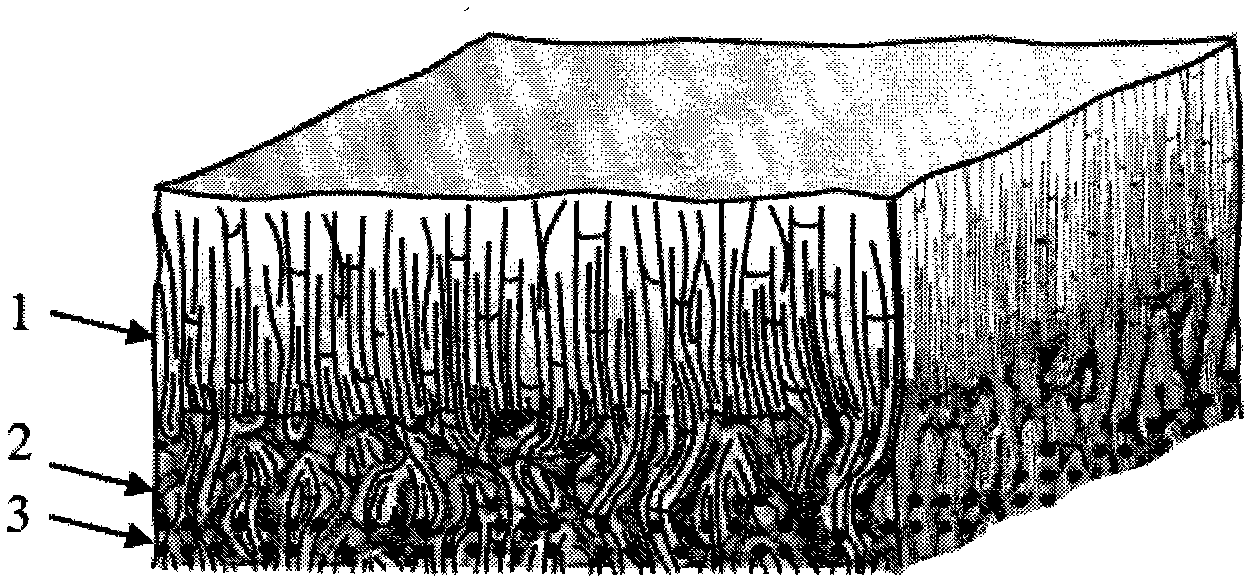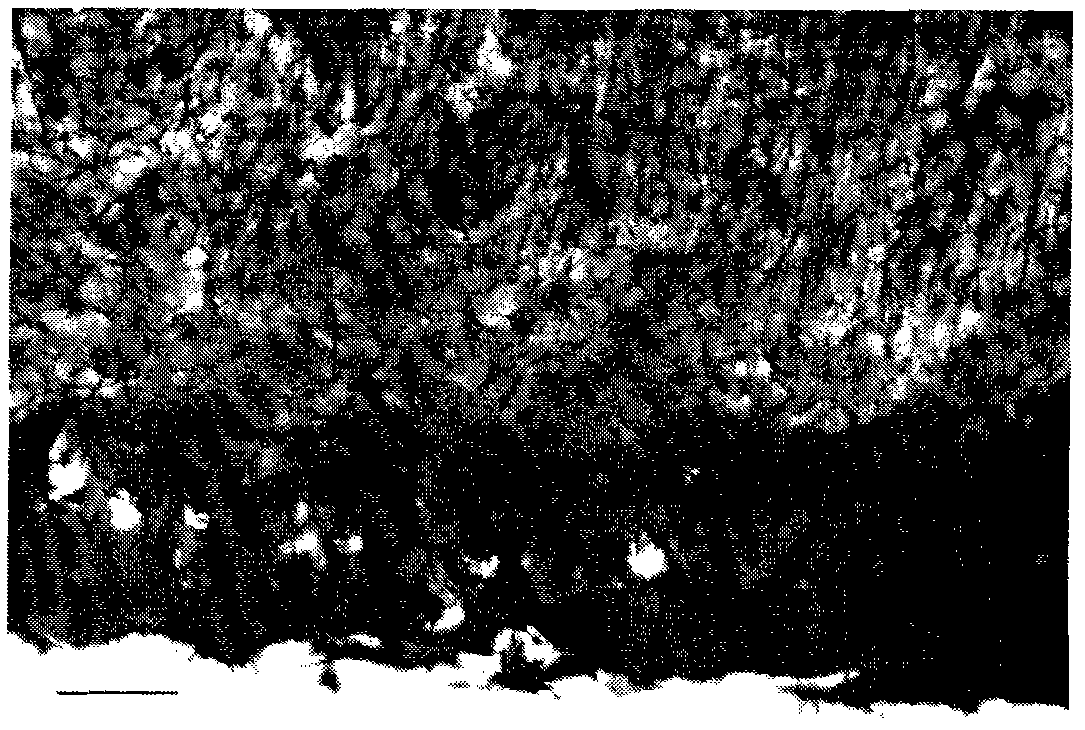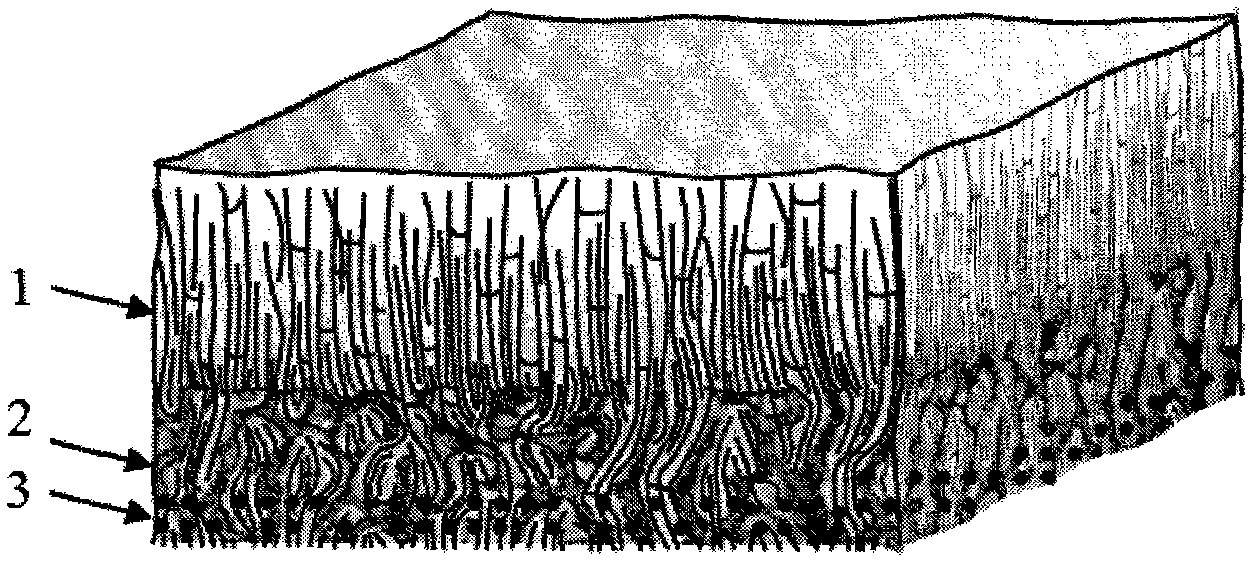Method for preparing tissue-engineered bone/cartilage integrated scaffold
A technology for tissue engineering bone and cartilage, applied in the field of tissue engineering technology and biomaterials, can solve the problems of complex process operation, poor shear resistance, obvious scaffold delamination, etc. Simple process effect
- Summary
- Abstract
- Description
- Claims
- Application Information
AI Technical Summary
Problems solved by technology
Method used
Image
Examples
Embodiment 1
[0036] Example 1: Preparation of different concentrations of articular cartilage extracellular matrix (ECM)
[0037] Purchase fresh porcine articular cartilage tissue pieces, rinse them repeatedly with normal saline, cut them into small pieces, and put them in Tris-HCL (pH7.4) buffer containing protease inhibitor phenylmethylsulfonyl fluoride (0.35mM) , Ultrafine wet pulverization at 4°C. Add triple distilled water to fully dilute and centrifuge at 4°C for 30 minutes at a differential speed (3000-6000r / min), collect the supernatant, and use 1% TritonX-100 at 4°C for 24 hours to descaling and remove residual cell components. Add deoxyribonuclease 50000U / L and ribonuclease 1000U / L, and digest at 37°C for 12 hours to remove nuclear substances. Add 10-20ml of 75% ethanol solution for precipitation, centrifuge at 12000r / min at 4°C to collect the precipitate, add triple distilled water to prepare two kinds of slurries with a concentration of 1% and 4%, and store at 4°C for later us...
Embodiment 2
[0038] Embodiment 2: Preparation of bone matrix gelatin (BMG)
[0039] Select the cancellous bone of the Achyranthes knee joint, cut the cancellous bone into 1mm-thick bone slices with a non-decalcified bone slicer, soak and rinse with normal saline repeatedly for 15-30 minutes, then soak in 1% hydrogen peroxide for 1 hour to The bone block is milky white. After rinsing the bone blocks twice with triple distilled water, they were frozen together at -20°C for 24 hours and then thawed, and the cell membrane was broken by repeated freezing and thawing twice in hypotonicity. Add fat-free and decellularized solution: 2% sodium dodecyl sulfate, 6% lipase, 1% ethylenediaminetetraacetic acid, 0.1% sodium azide, shake at room temperature for 24 hours. Then the bone slices were put into 10% ethylenediaminetetraacetic acid solution and stored at 37° C. for 4 days until the bone slices took on the shape of porous white sponge. Then rinse the bone slices with 3% TritonX-100 for 12 hours,...
Embodiment 3
[0040] Example 3: Preparation of bone matrix gelatin and extracellular matrix integrated scaffold
[0041] Choose a mold with one end open and the other end as a piston-type movable bottom. First put the BMG sheet prepared in Example 2 into the bottom of the mold, get 20ml of the 4% ECM slurry prepared in Example 1 and pour it into the mold, vibrate for 2 minutes, so that the ECM slurry is completely soaked into the BMG pores, and the excess slurry is covered in the mold. The upper surface of the BMG has a thickness of 2mm; the concentration in Example 1 is 10ml of ECM slurry and continues to be added to the mold, covered with 4% ECM slurry, and the vertical vibration makes the two layers of ECM slurry blend naturally to form an integrated structure. The overall thickness is 3mm; adjust the depth of the mold so that the slurry is flush with the open end, cover the open end with a stainless steel sheet and fully contact the slurry, and wrap the outer periphery and bottom of the...
PUM
 Login to View More
Login to View More Abstract
Description
Claims
Application Information
 Login to View More
Login to View More - R&D
- Intellectual Property
- Life Sciences
- Materials
- Tech Scout
- Unparalleled Data Quality
- Higher Quality Content
- 60% Fewer Hallucinations
Browse by: Latest US Patents, China's latest patents, Technical Efficacy Thesaurus, Application Domain, Technology Topic, Popular Technical Reports.
© 2025 PatSnap. All rights reserved.Legal|Privacy policy|Modern Slavery Act Transparency Statement|Sitemap|About US| Contact US: help@patsnap.com



